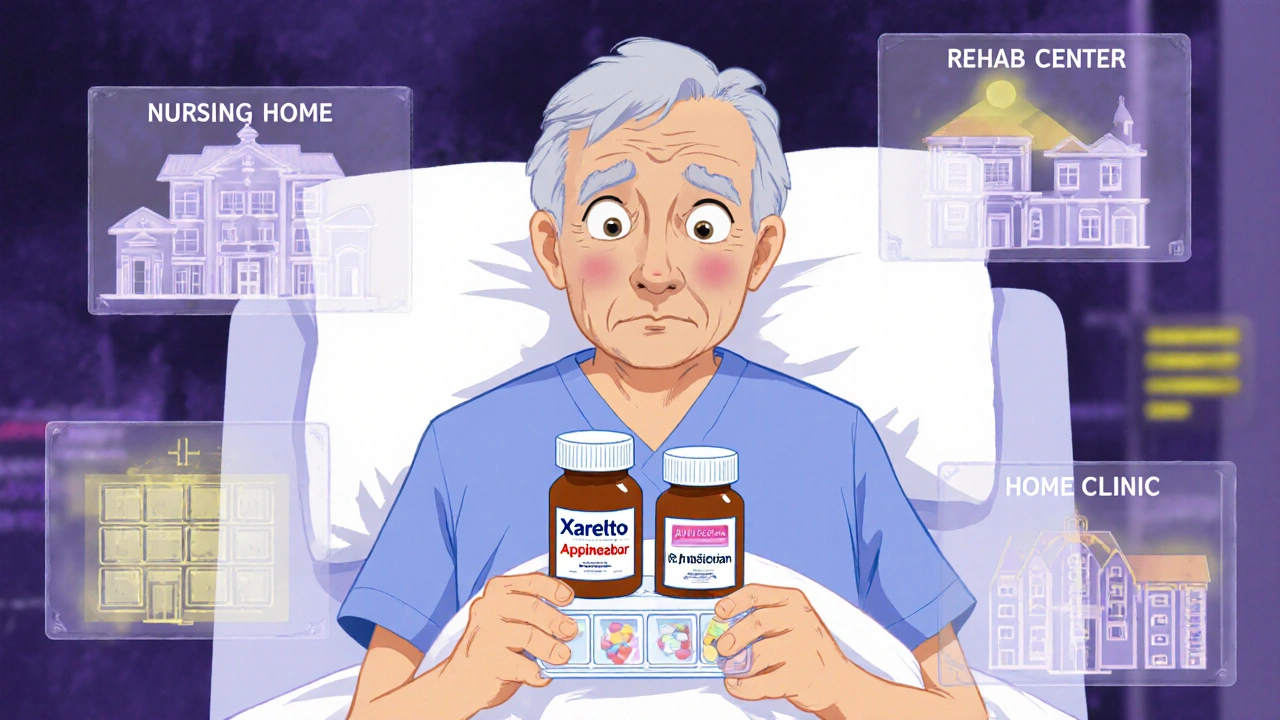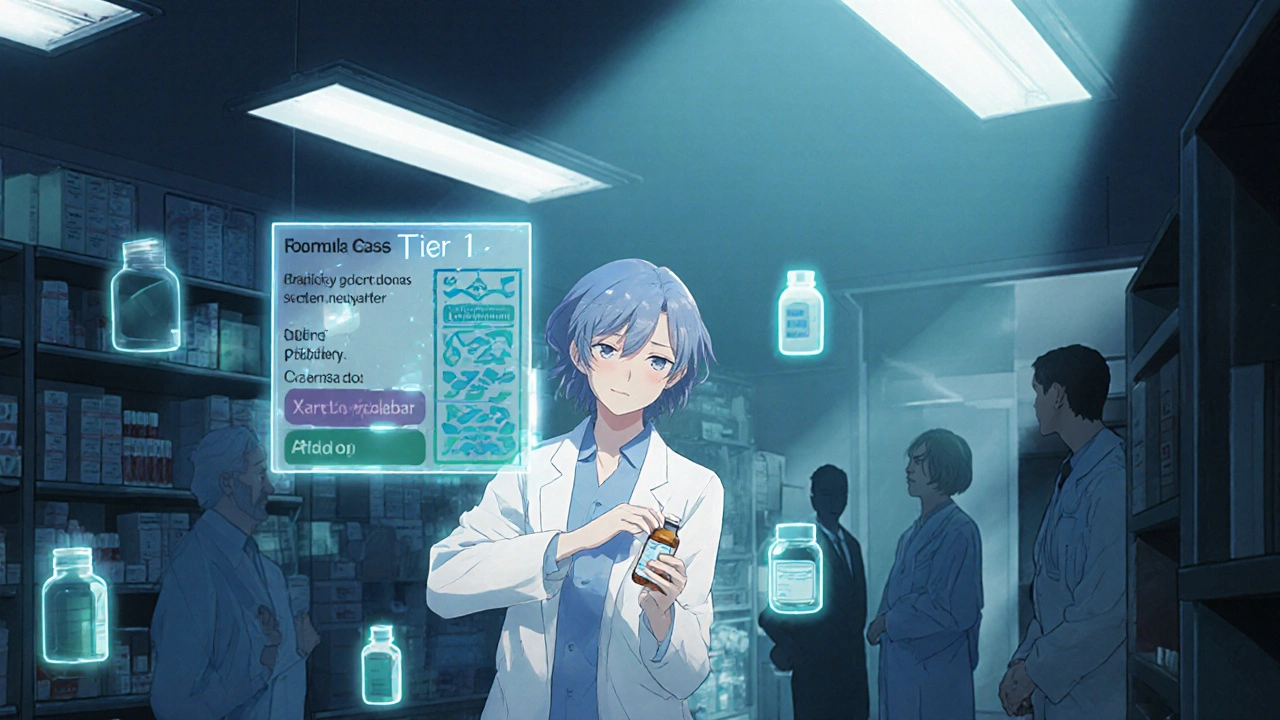When a patient in a nursing home is switched from one medication to another-say, from brand-name Xarelto to apixaban-without their doctor directly ordering it, that’s not a mistake. It’s therapeutic substitution, and it’s happening because of an institutional formulary. These aren’t just lists of approved drugs. They’re legally required systems that dictate which medications can be swapped, who decides, and how often outcomes are checked. In Florida, and increasingly across the U.S., these policies are reshaping how drugs are given in hospitals and clinics-and not always in ways patients or even doctors expect.
What Exactly Is an Institutional Formulary?
An institutional formulary is a living list of medications that a hospital, nursing home, or clinic has approved for use. But it’s more than a catalog. It’s a decision-making tool built around evidence, cost, and safety. Unlike insurance formularies that decide what a patient’s plan will pay for, institutional formularies control what drugs are actually available on the shelves and which ones can be swapped in without a new prescription. In Florida, the law (Statute 400.143) defines it clearly: it’s a system that lets pharmacists replace a prescribed drug with another one that’s chemically different but expected to work the same way. This is therapeutic substitution. It’s not random. It’s guided by a committee that includes the medical director, the nursing director, and a certified consultant pharmacist. These teams don’t just pick drugs based on price-they evaluate clinical data, side effect profiles, and real-world outcomes. The goal? Reduce errors, cut waste, and improve safety. Studies show that well-run formularies can lower adverse drug events by 15% to 30%. That’s not small. In long-term care, where patients take five, six, even ten medications a day, these systems prevent dangerous interactions before they happen.How These Formularies Work in Practice
Most institutional formularies use a tiered structure. Think of it like a pricing ladder:- Tier 1: Preferred generics-lowest cost, lowest patient copay. These are the first choice.
- Tier 2: Brand-name or newer generics with slightly higher cost.
- Tier 3: Non-preferred drugs-higher cost, often requiring special approval.
Who Decides What Goes on the List?
It’s not a single person. It’s a committee, and Florida law spells out exactly who must be on it:- The facility’s medical director
- The director of nursing services
- A consultant pharmacist certified under Florida Statute 465.0125

Formularies vs. Insurance Formularies: The Key Difference
People often confuse institutional formularies with insurance formularies. They’re not the same. Insurance formularies are about payment. They tell your plan what drugs it will cover-and how much you’ll pay out of pocket. If your drug isn’t on the list, you might have to pay full price or get prior authorization. Institutional formularies are about access and safety within a facility. They don’t care what your insurance covers. They care what drugs are available on the unit, and which ones can be swapped by a pharmacist without waiting for a new prescription. This matters because a patient might have a drug covered by their insurance-but not on the hospital’s formulary. Or vice versa. That’s why a patient can leave the hospital on one drug, get switched in rehab to another, and then return home to a third. No one system talks to the others. A pharmacist on Reddit shared a case where a patient was switched from Xarelto to apixaban in a nursing home, then back to Xarelto in the hospital. The patient didn’t know why, the family was confused, and the primary care doctor had no record of the change. That’s not a formulary failure-it’s a communication failure.Who Benefits? Who Gets Left Behind?
The benefits are real. Formularies reduce medication errors. They cut costs. They help facilities get better ratings from Medicare. Nursing homes with strong formularies are now being scored on their compliance by CMS, starting in late 2025. But the downsides are equally real. Physicians say getting a non-formulary drug approved can take days. One survey found 78% of doctors feel frustrated by bureaucratic delays when treating complex cases. A patient with rare epilepsy might need a drug that’s not on the list. Even if it’s the only one that works, they might have to wait for paperwork, appeals, or even legal exceptions. Patients, especially in long-term care, often don’t know they’ve been switched. AARP points out that many residents aren’t told about the change, and consent is rarely documented. That’s a problem. Therapeutic substitution isn’t just a clinical decision-it’s a patient rights issue. And it’s not just about drugs. It’s about power. Formularies give institutions control over prescribing. That’s good when it prevents overuse of expensive or risky meds. But it’s dangerous when it blocks access to what’s truly best for a patient.
The Future: AI, Genomics, and Tighter Rules
This isn’t static. Institutional formularies are evolving fast. In 2025, Florida updated its law to require even stricter monitoring. The Centers for Medicare & Medicaid Services will start factoring formulary compliance into nursing home quality ratings. The American Society of Health-System Pharmacists now recommends checking substitution outcomes every two months-not just quarterly. The biggest shift? Data. By 2026, Gartner predicts 80% of healthcare systems will use AI to adjust formularies in real time based on patient outcomes. Imagine a system that sees a spike in falls among patients on a certain blood thinner-and automatically flags it for review. Even more advanced: pharmacogenomics. That’s using a patient’s DNA to predict how they’ll respond to a drug. Deloitte found that 72% of healthcare executives plan to use this data in formulary decisions within five years. A drug that works for 80% of people might be pulled from the formulary if it’s known to cause severe reactions in people with a specific gene variant. But with all this innovation comes risk. If every state starts writing its own rules-32 already have nursing home formulary laws-what happens when a patient crosses state lines? Will their medication be swapped again? Will the new facility even recognize the old formulary?What Patients and Families Should Know
If you or a loved one is in a hospital, rehab center, or nursing home:- Ask: “Is this the drug my doctor ordered, or was it substituted?”
- Ask: “Can I get a copy of the facility’s formulary?”
- Ask: “Was I told about this change? Was I asked for permission?”



13 Comments
Lashonda Rene
November 8, 2025 AT 23:13so i had my grandma in a nursing home last year and they switched her blood thinner without telling us and she got dizzy and fell and broke her hip and i was like wait what happened and the nurse said oh its just the formulary thing and i was like so you just swap meds like trading cards?? like no one asked if she was okay with it?? i mean i get saving money but not at the cost of someone’s safety
Rashmi Mohapatra
November 9, 2025 AT 00:14usa be like ‘we care about patients’ but then swap meds like its a coupon deal. in india we dont even have these fancy formularies and people still get treated. maybe u should fix ur system before making more rules
Abigail Chrisma
November 9, 2025 AT 15:21thank you for writing this. as a nurse in a long-term care facility, i see this every day. the formulary keeps us from giving 10 different blood thinners to 10 different people and having a disaster. but you’re right-patients are rarely informed. we need better communication, not just better lists. i’ve started printing out a one-pager for families when a swap happens. small thing, but it helps
Ankit Yadav
November 9, 2025 AT 16:04the real issue isnt the formulary its the lack of interoperability between hospitals clinics and pharmacies. if your meds dont travel with you then the system is broken. not the policy. fix the tech not the rules
Meghan Rose
November 10, 2025 AT 08:16oh please. another ‘healthcare is so complicated’ post. its just cost-cutting disguised as safety. if they really cared about outcomes they’d pay for the right drugs instead of playing russian roulette with geriatric patients. also why is it always the elderly who get swapped out? never the rich ones in private clinics
Steve Phillips
November 11, 2025 AT 07:11Oh. My. GOD. You mean to tell me that hospitals-these sacred halls of medical enlightenment-are now playing Tetris with pharmaceuticals?! They’re swapping Xarelto for apixaban like it’s a Pokémon card trade?! And you call this ‘evidence-based’?! This isn’t medicine-it’s a corporate bingo game where the prize is a 15% reduction in adverse events and a 30% increase in shareholder dividends! Someone call the FDA. Someone call the WHO. Someone call my therapist. I need to lie down.
Rachel Puno
November 11, 2025 AT 22:55i work in pharmacy and i can tell you the formulary saved lives. one time we swapped a high-risk anticoagulant for a safer generic and cut ER visits by 40% in 6 months. yes its bureaucratic but when you see the numbers you realize its worth it. the real problem is when docs dont update the ‘do not substitute’ flag. that’s on them
Clyde Verdin Jr
November 12, 2025 AT 14:29LOL. So now pharmacists are doctors? Next they’ll let the cafeteria staff prescribe insulin. 😂 This is why America’s healthcare is a dumpster fire. You let a committee of bureaucrats decide what my grandma takes? I’d rather die than let some guy in a lab coat swap my meds because ‘it’s cheaper’. #MedicationsAreNotBulkBuyItems
Key Davis
November 14, 2025 AT 04:51While the intent of institutional formularies is commendable, the implementation often lacks the necessary humanistic dimension. The ethical imperative of patient autonomy must be preserved through informed consent, transparent documentation, and consistent communication across care transitions. Without these safeguards, even the most evidence-based protocols risk becoming instruments of institutional control rather than agents of patient-centered care.
Cris Ceceris
November 15, 2025 AT 19:19i wonder if this is what it feels like to be a car that gets its engine swapped because the new one is cheaper. no one asked if you liked the new one. no one checked if you still run smoothly. you just… got changed. and now you’re supposed to be grateful because you’re ‘more efficient’
Brad Seymour
November 15, 2025 AT 20:24really interesting stuff. in the uk we have something similar but it’s called the BNF and it’s way more collaborative. docs and pharmacists sit down together, no committees. just people who actually treat patients. maybe we need less red tape and more real talk
Malia Blom
November 16, 2025 AT 07:06formularies are just the latest way for institutions to pretend they care while quietly stripping away choice. next they’ll swap out your therapist because ‘we have a cheaper one who’s 87% as effective’. it’s not safety-it’s surrender. and we’re all just supposed to nod and say ‘oh good, we saved $12.50’
Andy Slack
November 16, 2025 AT 16:34just one thing: if you’re in a facility and they swap your med-ask for the formulary document. it’s your right. and if they say no? tell them you’re filing a complaint with the state health board. they’ll fix it fast. seriously. just ask. it’s that simple.